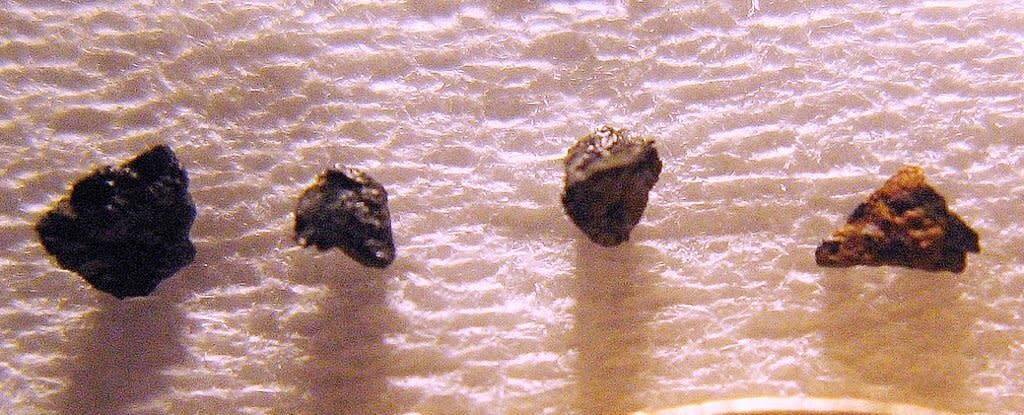Scientists Found an Extraterrestrial Stone in Egypt That Might Prove That a Rare Supernova Took Place

University of Johannesburg
Supernovas are stellar explosions out in the universe. Even though scientists have spent years learning more about them, they might have just found tangible proof that a rare one took place, per a new study published in Icarus. These findings document an extraterrestrial Hypatia stone, which was found in Egypt back in 1996. The University of Johannesburg scientists believe that this rock was from a type la supernova, a rare explosion that occurs when a dense white dwarf star absorbs another due to its chemical makeup and patterning.
To glean their discovery, the team examined 17 different targets on the small Hypatia samples. They were able to track the rock's origin based on the low levels of silicon, chromium, and manganese, which helped them realize it was from outside of the inner solar system. "If this hypothesis is correct, the Hypatia stone would be the first tangible evidence on Earth of a supernova type Ia explosion," said Kramers. "Perhaps equally important, it shows that an individual anomalous parcel of dust from outer space could actually be incorporated in the solar nebula that our solar system was formed from, without being fully mixed in."
Related: A Star Is Speeding Through the Milky Way at Nearly Two Million Miles an Hour
After studying the rock fragments through chemical analysis, the team noted that this stone likely came from a parent body—a celestial mass that creates meteorites—that existed around the time our solar system was created. "In a sense, we could say, we have caught a supernova la explosion in the act," said Jan Kramers, a geochemist from the University of Johannesburg, explaining that the gas atoms from the massive explosion were likely caught in the surrounding dust cloud, which eventually formed Hypatia's parent body.
While there were six elements that didn't quite align with the model of a supernova, the researchers still believe the stone came from a white dwarf star explosion, since many of the elements do match up. "Since a white dwarf star is formed from a dying red giant, Hypatia could have inherited these element proportions for the six elements from a red giant star," said Kramers. "This phenomenon has been observed in white dwarf stars in other research.

